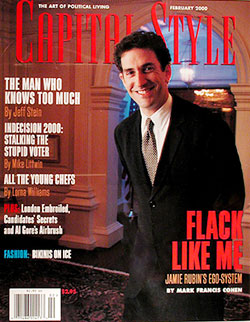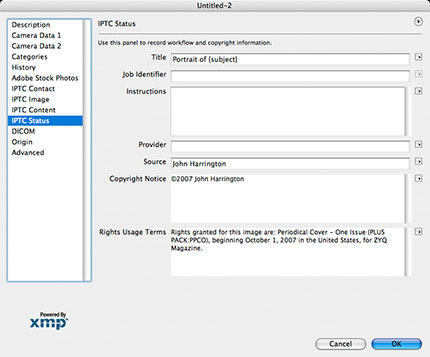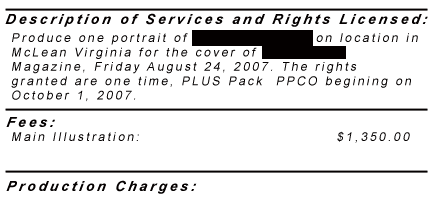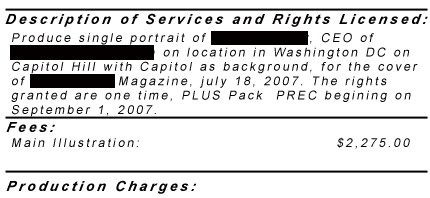PLUS – Completing the Circle
 It was great to learn last week that The American Association of Advertising Agencies (AAAA) has not only joined the PLUS Coalition, but has assigned their V.P. Harold S. Geller (LinkedIn: Profile) to take a seat on the PLUS Coalition’s Board of Directors. Good to see AAAA stepping up to the plate on behalf of its members. The PLUS Board includes 13 seats – one seat (and one vote) for each industry that creates, distributes, uses or preserves images. Only non-profit organizations can hold a PLUS Board seat, and all Board members are unpaid volunteers. PLUS clearly did it right, setting up an industry-neutral board from the beginning.
It was great to learn last week that The American Association of Advertising Agencies (AAAA) has not only joined the PLUS Coalition, but has assigned their V.P. Harold S. Geller (LinkedIn: Profile) to take a seat on the PLUS Coalition’s Board of Directors. Good to see AAAA stepping up to the plate on behalf of its members. The PLUS Board includes 13 seats – one seat (and one vote) for each industry that creates, distributes, uses or preserves images. Only non-profit organizations can hold a PLUS Board seat, and all Board members are unpaid volunteers. PLUS clearly did it right, setting up an industry-neutral board from the beginning.
AAAA has also indicated that they will be incorporating the PLUS standards into Ad-ID, the digital asset management system used by the world’s largest corporations to manage tv commercials, images and other content. Ad-ID is jointly owned and operated by AAAA and the Association of National Advertisers (ANA), one of the most powerful trade associations in our business or any other.
When I participated in the PLUS standards building process several years ago, I did so along-side 2000 other volunteers, including dozens of art buyers from ad agencies of all sizes, many from the major-league ad agencies. I quickly found that photographers’ clients are every bit as enthusiastic about PLUS as photographers. Why? PLUS was and is the only example of clients and photographers joining forces on a global scale to improve our industries for the benefit of all concerned.
I have to admit that at first, I had doubts that the photography organizations could set aside their differences and cooperate effectively on a major initiative. Fortunately, they could. Every major photographers’ association in USA and many abroad are members of the PLUS Coalition. I also wasn't sure that clients and stock agencies would join in and collaborate with photographers on a level playing field, to build industry standards. Yet, they did. The publishers, designers and ad agencies are well represented within PLUS, as are the stock agencies (PACA, CEPIC, Getty, Corbis, Masterfile, Alamy, etc). And of course, I had no hope that the museums and libraries would join in. After all, they are among the most vocal proponents of the orphan works legislation, fair use, and sharing of works. Not only are the museums and libraries (J Paul Getty Trust, New York Metropolitan Museum, Boston MFA, etc) participating in PLUS, but even organizations like Creative Commons are collaborating with the Coalition.
I now understand why. There is no downside to PLUS, for any industry or profession. PLUS standards can be applied to an image licensing model and are designed to remain relevant in a continually evolving marketplace. PLUS is about clear communication, and clear communication benefits everyone. Except perhaps the lawyers. By describing rights using words and definitions approved by all industries, and by using IDs that uniquely identify every rights holder, every image, and every license, we can avoid misunderstandings with our clients and help them and everyone else to make informed decisions about using our images.
PLUS has made remarkable progress. In just a few years, they have pulled together an incredibly diverse group of stakeholders, successfully developed our industry’s first business standards, and are now working on integrating those standards into common applications that we already use in our workflow. This is the key. Adobe has been a major supporter of PLUS from the start, and I am looking forward to seeing Adobe integrate PLUS across the board in all of their applications. Tim Armes built a very nice PLUS for Lightroom plugin, but I’d like to see Lightroom fully integrate PLUS. The DAM software companies are now working with PLUS, because the major publishers have all announced that they will require photographers, stock agencies and all other vendors to use the PLUS standards. Hindsight has build PLUS into their licensing workflow. Apple has got to wake up and build PLUS metadata into Aperture. Some other companys just seem to be asleep at the wheel, lagging behind on adoption of the standards. Everyone benefits from the PLUS standards, yet some seem to think that by ignoring the PLUS successes and in-roads, they will somehow not occur. That's like turning your back on a tidal wave and pronouncing "wave? what wave?" simply because you can't see it cresting over your head.
Kudos to ASMP, APA and NPPA for their recent contributions of Authors Coalition royalty funding to PLUS, which is the perfect initiative to make use of those funds. Kudos also to AAAA for taking a leadership role in the PLUS Coalition and completing the circle.
Please post your comments by clicking the link below. If you've got questions, please pose them in our Photo Business Forum Flickr Group Discussion Threads.
 Consider this - You're called to shoot a
Consider this - You're called to shoot a 


